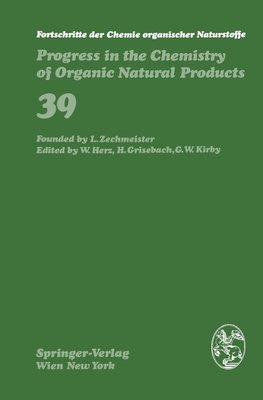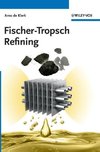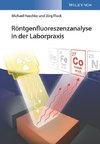
-
 Anglický jazyk
Anglický jazyk
Fortschritte der Chemie organischer Naturstoffe / Progress in the Chemistry of Organic Natural Products
Carbohydrate Derivatives in the Asymmetric Synthesis of Natural Products.- I. Introduction.- II. Some Background Information.- III. Some Attributes of Carbohydrate Synthons.- 1. Enantiomeric Purity.- 2. Conformational Bias.- 3. Ready Proof of Structure.-... Viac o knihe
Na objednávku, dodanie 2-4 týždne
49.49 €
bežná cena: 54.99 €
O knihe
Carbohydrate Derivatives in the Asymmetric Synthesis of Natural Products.- I. Introduction.- II. Some Background Information.- III. Some Attributes of Carbohydrate Synthons.- 1. Enantiomeric Purity.- 2. Conformational Bias.- 3. Ready Proof of Structure.- 4. Latent Functionalities.- IV. Syntheses.- 1. Acyclic Transfer.- a) L-erythro-Biopterin.- b) Pyridomycin.- c) (+)- and (¿)-Frontalin.- d) (+)- and (¿)-exo-Brevicomin.- e) Erythronolide.- 2. Cyclic Transfer of Pyranoids.- a) Thromboxane.- b) Asperlin.- c) ?-Multistriatin.- 3. Cyclic Transfer of Furanoids.- a) (¿)-Avenaciolide.- b) (+)-Avenaciolide.- c) (¿)-Isoavenaciolide.- d) (¿)-Canadensolide.- e) 11-Oxaprostaglandin.- f) d-Oxybiotin.- g) (+)-Biotin.- 4. Transcription.- a) Prostaglandins.- b) An Approach to Tetrodotoxin.- c) Chiral Cycloalkanes from Annulated Pyranosides.- d) Cyclopropano Pyranosides.- e) Cyclobutano Pyranosides.- f) Cyclohexano Pyranosides.- g) Cyclopentano Furanosides.- References.- Recent Advances in the Biology and Chemistry of Vitamin D.- I. Biology and Biochemistry of Vitamin D.- 1. Introduction.- 2. 25-Hydroxyvitamin D3 and l?,25-Dihydroxyvitamin D3.- 3. Calcium.- 4. 24(R) 25-Dihydroxyvitamin D3.- 5. 25,26-Dihydroxyvitamin D3.- 6. Clinical Aspects.- II. Partial and Total Synthesis.- 1. Introduction.- 2. Side Chain Modification.- a) 25-Hydroxycholesterols.- b) 24,25-Dihydroxycholesterol and 25,26-Dihydroxycholesterol.- c) Side Chain Analogs of Vitamin D.- 3. Ring Modified Sterols.- a) l?-Hydroxycholesterols.- b) Other A-Ring Modifications.- c) Reactions in the B-Ring of Sterols.- 4. Analogs Prepared by Modification of Vitamin D and Related Compounds.- 5. Total Synthesis.- a) A-Ring Precursors.- b) C-D Ring and Side Chain Fragments.- c) Other Approaches.- III. Photolytic and Thermal Conversions of the Vitamin D Isomers.- 1. Photolysis of the Provitamin.- 2. Photolysis of the Previtamin.- 3. Photolysis of Vitamin D.- 4. Thermolysis of Previtamin D.- References.- Stereochemistry of Naturally Occurring Carotenoids.- I. General Introduction.- II. Historical.- III. Methods and Application.- 1. X-Ray Crystallography.- 2. Electronic Spectra.- 3. Vibrational Spectra.- 4. Proton Nuclear Magnetic Resonance Spectroscopy.- 5. 13C Nuclear Magnetic Resonance Spectroscopy.- a) Authentic Carotenoids.- b) Use in Structural Elucidation.- 6. Optical Rotatory Dispersion and Circular Dichroism.- 7. Linear Dichroism.- 8. High Pressure Liquid Chromatography.- 9. Horeau Method.- 10. Oxidative Degradation.- 11. Partial Synthesis.- 12. Total Synthesis.- a) Racemic Carotenoids.- b) Optically Active Model Carotenoids.- c) Optically Active Carotenoids.- d) Z-Isomers.- IV. Geometrical Isomerism.- V. Established Chirality.- VI. Chirality and Biogenetic Relationships.- 1. De novo Synthesis.- 2. Metabolic Transformations.- 3. Carotenoproteins.- References.- Chemistry and Biochemistry of ?-Glutamyl Derivatives from Plants Including Mushrooms (Basidiomycetes).- I. Introduction.- II. Nomenclature.- III. Structures and Distribution of ?-Glutamyl Derivatives from Plants.- 1. ?-Glutamyl Derivatives of Protein Amino Acids.- 2. ?-Glutamyl Derivatives of Non-Protein Amino Acids Which Do not Contain Sulphur or Selenium.- 3. ?-Glutamyl Derivatives of Non-Protein Amino Acids Containing Sulphur or Selenium.- 4. ?-Glutamyl Derivatives of Amines.- 5. Distribution Patterns for the ?-Glutamyl Derivatives.- VI. Chemical, Spectroscopic, and Analytical Properties of ?-Glutamyl Derivatives.- 1. pK-Values.- 2. Optical Activity.- 3. Infrared Spectra.- 4. NMR-Spectra.- 5. Gas Chromatography, Mass Spectroscopy, and Combined Gas Chromatography-Mass Spectroscopy.- 6. Paper Chromatography.- 7. Paper Electrophoresis.- 8. Ion-Exchange Chromatography.- 9. Degradation and General Chemical Properties of ?-Glutamyl Derivatives.- 10. Isolation Procedures and Stability of ?-Glutamyl Derivatives.- 11. Establishment of the ?-Linkage.- V. Isolation and Structure Determination of Individual Compounds.- 1. ?-L-Glutamyl-?-cyano-l-alanine.- 2. Linatine (l-[(N-?-l-Glutamyl)amino]-D-proline).- 3. ?-Glutamylvalylglutamic Acid.- 4. ?-L-Glutamyl-l-phenylalanyl-l-willardiine.- 5. ?-L-Glutamyl-?-l-glutamyl-l-phenylalanine.- 6. ?-Glutamylmarasmine (?-l-Glutamyl-3-(methylthiomethylsulphinyl)-l-alanine).- 7. Lentinic Acid (2- ?-l-Glutamylamino-4,6,8,10,10-pentaoxo-4,6,8,10-tetrathiaundecanoic Acid).- 8. N,N-bis-(?-Glutamyl)-3,3?-(1-methylethylene-1,2-dithio)-dialanine.- 9. ?-l-Glutamyl-L-cysteinyl-?-alanine.- 10. ?-l-Glutamyl-S-(prop-1-enyl)-cysteinyl-S-(prop-1-enyl)-l-cysteine sulphoxide.- 11. ?-l-Glutamyl-S-(2-carboxypropyl)-l-cysteinylglycinfe.- 12. ?-Glutamyl-?-glutamylmethionine.- 13. N5-(1-Methyl-2-oxopentyl)-l-glutamine.- 14. N5-(2-Cyanoethyl)-l-glutamine.- 15. Coprine (N5-(l-Hydroxycyclopropyl)-l-glutamine).- 16. N5-(3,4-Dioxocyclohexa-l,5-dien-l-yl)-l-glutamine.- 17. Agaritine (N5-[(4-Hydroxymethylphenyl)amino]-l-glutamine).- VI. Synthesis.- 1. General Discussion.- 2. Linatine (l-[(N- ?-l-Glutamyl)amino]-d-proline).- 3. Hypoglycine B (?-L-Glutamyl-(2S,1?R)-3-methylene-cyclopropyl)-alanine.- 4. Coprine (N5-(l-hydroxycyclopropyl)-l-glutamine).- 5. Agaridoxin (N5-(3,4-Dihydroxyphenyl)-l-glutamine).- 6. Agaritine (N5-[(4-Hydroxymethylphenyl)amino]-l-glutamine).- VII. Biosynthesis and Transformations of ?-Glutamyl Derivatives in Plants.- 1. Glutathione in Plants and Its Relationship to Other Plant ?-Glutamyl Derivatives.- 1.1. Occurrence and Isolation of Glutathione.- 1.2. Biosynthesis of ?-Glutamylcysteine and Glutathione.- 1.3. The Function of Glutathione in Plants.- 1.4. Degradation of Glutathione in Plants.- 2. Biosynthesis of Glutamine in Plants.- 3. ?-Glutamyl Transferases in Plants.- 4. Degradation Systems for ?-Glutamyl Derivatives in Plants.- 5. Occurrence of ?-Glutamyl Derivatives in Different Parts of Plants and During the Life Cycles of Plants.- 6. Specific Systems for Biosynthesis and Degradation of Individual ?-Glutamyl Derivatives.- 6.1. ?-l-Glutamyl-?-cyano-l-alanine.- 6.2. ?-Glutamyl Derivatives of Sulphur-Containing Amino Acids in Allium Species.- 6.3. Lentinic Acid and ?-Glutamylmarasmine.- 6.4. Theanine (N5-Ethyl-l-glutamine) and N5-Methyl-l-glutamine.- 6.5. N5-(4-Hydroxyphenyl)-l-glutamine, Agaridoxin (N5-(3,4-Dihydroxyphenyl)-l-glutamine), and N5-(3,4-Dioxocyclohexa-l,5-dien-l-yl)-l-glutamine.- 7. The ?-Glutamyl Cycle and ?-Glutamyl Derivatives in Plants.- 7.1. The Cycle in Animals and Microorganisms.- 7.2. Evidence for the Presence in Plants of the Enzymes Involved in the ?-Glutamyl Cycle.- 7.3. Transport of Amino Acids Across Cell Membranes in Plants.- 8. Conclusions.- VIII. ?-Glutamyl Derivatives with Toxic or Other Specific Biological Properties.- 1. ?-l-Glutamyl-?-cyano-l-alanine and N5-(2-Cyanoethyl)-l-glutamine.- 2. Linatine (l-[(N- ?-l-Glutamyl)amino]-d-proline).- 3. HypoglycineB(?-L-Glutamyl-(2S,1?R)-3-(methylenecyclopropyl)-alanine).- 4. ?-l-Glutamyl-Se-methylseleno-l-cysteine.- 5. Coprine (N5-(l-Hydroxycyclopropyl)-l-glutamine).- 6. N5-(3,4-Dioxocyclohexa-l,5-dien-l-yl)-l-glutamine.- IX. Compounds Structurally Related to ?-Glutamyl Derivatives from Plants.- X. Summary.- Acknowledgements.- Addendum.- References.- Author Index.
- Vydavateľstvo: Springer Vienna
- Rok vydania: 2012
- Formát: Paperback
- Rozmer: 235 x 155 mm
- Jazyk: Anglický jazyk
- ISBN: 9783709185537



 Nemecký jazyk
Nemecký jazyk 








